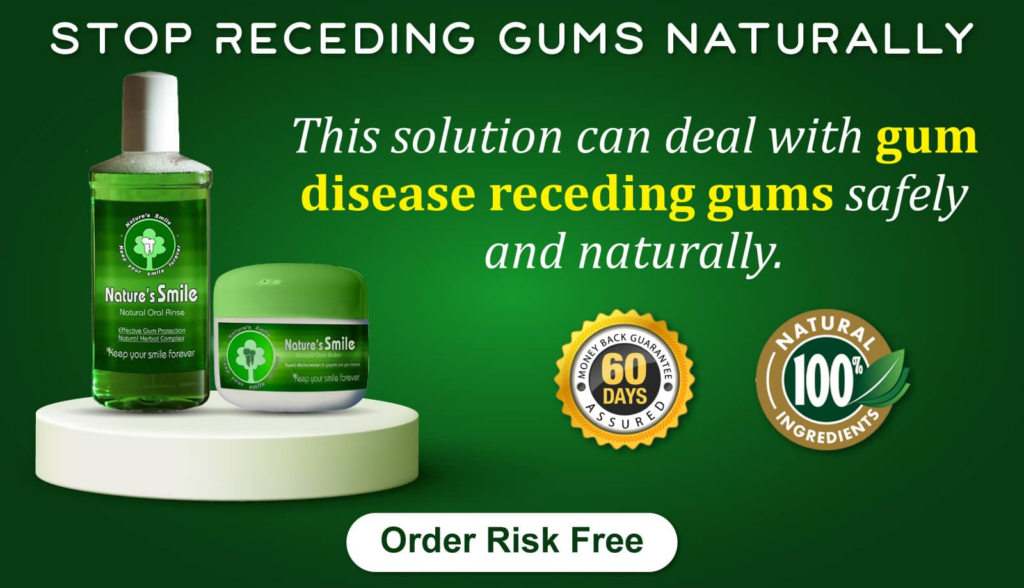Maintaining healthy gums is an essential aspect of overall oral health. However, gum damage and disease are common among adults and can cause discomfort, pain, and even tooth loss if left untreated. Healing gums requires proper care, attention to oral hygiene, and sometimes professional intervention. In this article, we will explore frequently asked questions about healing gums to help you understand the causes of gum damage, signs of healing, preventative measures you can take at home, when to seek professional help from a dentist or periodontist, and more.
Whether you have noticed redness or bleeding in your gums or have been diagnosed with gum disease or recession by a dental professional, understanding how to promote gum healing is crucial for maintaining optimal oral health. The process of receding gums can vary depending on the severity of the issue and individual factors such as age and overall health status. By learning more about what causes gum damage and how to prevent it from occurring in the first place – through good oral hygiene habits such as brushing twice daily with fluoride toothpaste and flossing regularly – you can take steps towards promoting healthy gums that contribute to a bright smile that lasts a lifetime.
Another Article: https://gumlinehealer.com/frequently-asked-questions-about-gum-health/
How Long Does It Take for Gums to Heal?
The healing process for gum tissue can vary in duration, depending on the severity of the condition and the effectiveness of treatment methods employed. In general, it may take anywhere from a few days to several weeks for gums to heal. The extent of damage inflicted on the gums is a major determinant of how long it would take for them to recover. Mild conditions such as gingivitis, which only affects the surface layers of gum tissues, may begin to show improvement within a week or two with proper care and maintenance.
Teeth don’t fall out overnight—gums give early warnings. Find out how far your gums can recede before your teeth are at serious risk right here. https://dentistdecode.com/gums-recede-before-teeth-fall/
However, more severe conditions such as periodontitis may require extensive treatment procedures that can last several months before significant improvements are noticed. Treatment options typically include scaling and root planing procedures, prescription medications such as antibiotics or antiseptic mouthwashes, or surgery in extreme cases. These treatments help remove plaque build-up and bacteria that contribute to gum inflammation and disease.
Recovery techniques also play an essential role in how quickly gums heal after treatment. Proper oral hygiene practices must be implemented immediately after treatment procedures have been completed to prevent re-infection or complications that can prolong recovery time. This includes regular brushing twice daily using fluoride toothpaste plus flossing at least once per day. Patients should also avoid smoking or tobacco use during recovery since these habits can slow down healing by reducing blood flow to the affected area and increasing infection risk. Ultimately, patients must follow their dentist’s instructions carefully for a quicker recovery period without any complications involved.
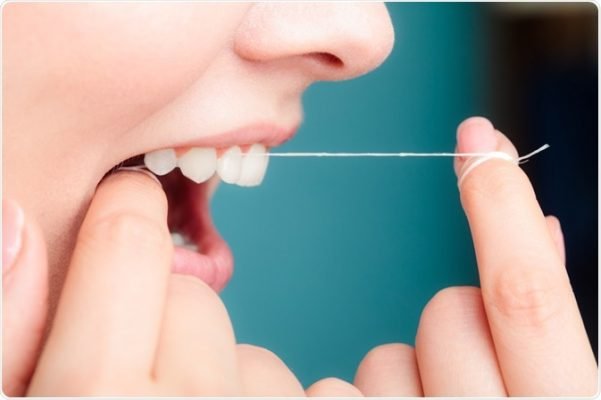
What Are the Signs of Healing Gums?
Observing the progress of gum health can be aided by identifying certain indicators that signify the process of healing. The gums go through different stages in their healing process, which is influenced by several factors such as age, overall health status, and treatment received. During the first stage of gum healing, which usually occurs within a week or two after treatment, there may be some swelling and tenderness in the affected area. However, this should gradually reduce over time.
As the healing process continues, patients may also notice an increase in pinkness and firmness of the gums. This indicates that blood flow has been restored to the area and new tissue is forming. Over time, these changes become more noticeable as the gums continue to heal and regenerate. It is important to note that every patient’s healing timeline will vary depending on individual circumstances.
Observing certain signs during the gum healing process can help indicate progress towards recovery. These signs include a reduction in swelling and tenderness along with an increase in pinkness and firmness of the gums. As patients move through different stages of their gum healing journey – each unique to their own situation – they should remain patient while following their dentist’s recommended care plan for optimal results.
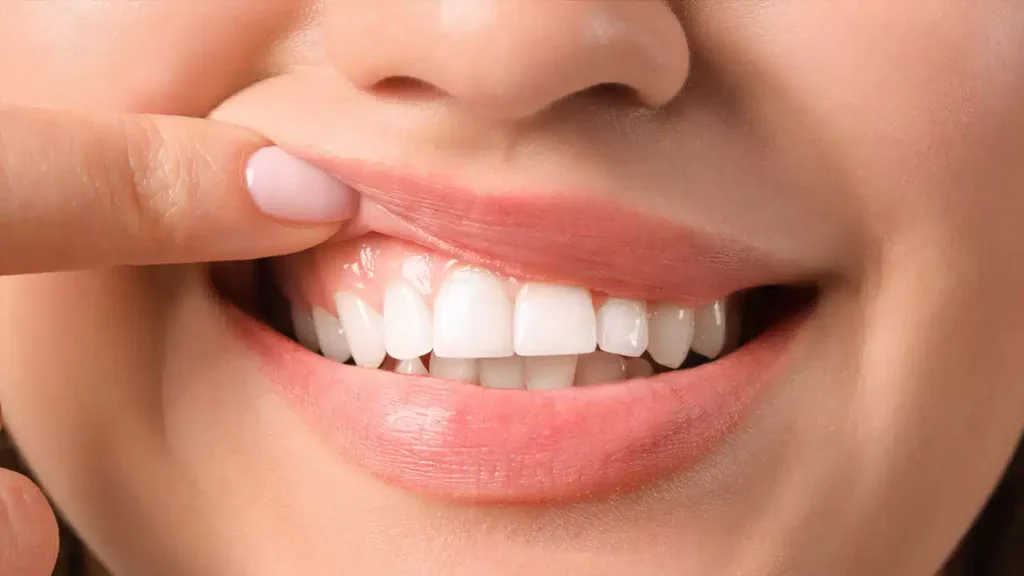
What Are the Common Causes of Gum Damage?
Understanding the common causes of gum damage is essential for maintaining optimal oral health. Gum disease is a widespread condition that affects millions of people worldwide. The primary cause of gum disease is poor oral hygiene, which allows bacteria to accumulate in the mouth and form plaque on the teeth. This buildup can irritate the gums, leading to inflammation and infection.
Other factors that contribute to gum damage include smoking, hormonal changes, certain medications, and genetics. Smoking increases your risk of gum disease by reducing blood flow to the gums and weakening your immune system’s ability to fight off infections. Hormonal changes during pregnancy or menopause can also affect the gums’ health by making them more susceptible to infection.
Preventive measures are crucial in maintaining healthy gums. Brushing twice a day with fluoride toothpaste and flossing daily helps remove plaque from teeth and prevent gum disease from developing. Regular dental checkups are also essential as they allow dentists to detect early signs of gum disease before it becomes severe.
Treatment options for those who have already experienced gum damage depend on the severity of their condition. Non-surgical treatments such as scaling and root planing involve removing plaque buildup below the gum line, while surgical interventions like flap surgery may be necessary for severe cases. Antibiotics may also be prescribed if there is an active infection present.
Overall, understanding what causes gum damage is critical in preventing its occurrence altogether or treating it promptly if needed. Incorporating good oral hygiene practices into daily routines coupled with regular dental visits can help keep gums healthy for a lifetime.
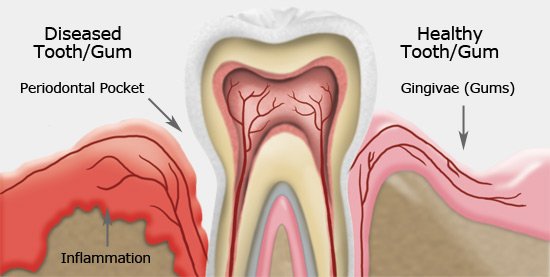
How Can I Promote Gum Healing?
Promoting gum healing is essential in ensuring a healthy mouth. The best way to achieve this is through good oral hygiene practices such as brushing twice daily, flossing regularly, and using mouthwash. Brushing helps remove plaque that can irritate the gums, while flossing helps to get rid of any food particles lodged between teeth that could cause irritation. Mouthwash is also helpful in killing bacteria that may cause gum disease.
In addition to good oral hygiene practices, there are various home remedies one can use to promote gum healing. These include rinsing with saltwater or hydrogen peroxide solution, applying aloe vera gel directly on the gums, and consuming foods rich in vitamins C and D. Saltwater has anti-inflammatory properties that can help reduce swelling and alleviate pain. Hydrogen peroxide also kills bacteria that may be causing gum problems. Aloe vera gel has antibacterial properties and can help soothe irritated gums. Finally, eating fruits like oranges and vegetables like spinach which are rich in vitamin C helps boost immunity while vitamin D aids in calcium absorption necessary for strong bones including teeth.
It’s important to note that if you have underlying medical conditions such as diabetes or heart disease it’s essential to manage them properly as they could affect your gum health negatively. Additionally, avoiding smoking or quitting altogether will go a long way in promoting gum healing and overall oral health since it causes harm not only to your lungs but also your teeth and gums.
Promoting healthy gums requires dedication and commitment towards maintaining good oral hygiene practices coupled with adopting home remedies where possible while avoiding harmful habits such as smoking. Seeking prompt treatment for any signs of gum disease is also crucial for achieving optimal oral health outcomes.
What Are the Complications of Poor Gum Healing?
Poor gum healing can lead to various complications such as tooth loss, bone damage, and increased risk of systemic diseases. When gums are not healthy, they cannot properly support the teeth. Over time, this can lead to the loosening and eventual loss of teeth. Additionally, poor gum health can result in damage to the bones that support the teeth. This damage can weaken the bones and make it even more difficult for them to support the surrounding teeth.
Prevention is key when it comes to avoiding complications from poor gum healing. Practicing good oral hygiene habits such as brushing twice a day and flossing daily is essential in maintaining healthy gums. Regular visits to a dental professional are also important for early detection and treatment of any gum issues.
Not only can poor gum healing lead to physical complications like tooth loss and bone damage, but it has also been linked with an increased risk of systemic diseases such as heart disease, diabetes, and stroke. The mouth is connected to the rest of the body, so taking care of one’s oral health can have positive effects on overall health as well. By following good oral hygiene practices and seeking prompt treatment for any gum issues that arise, individuals can help prevent these serious complications from occurring.
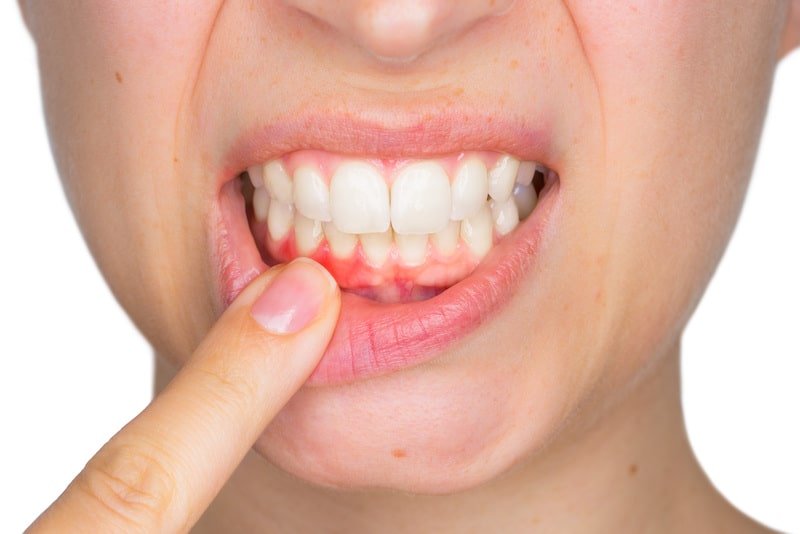
When Should I See a Dentist?
If you experience persistent pain or discomfort in your gums, it may be a sign of an underlying issue that requires further attention from a dentist. In addition, excessive bleeding or swelling can also indicate a problem with gum health that should be addressed promptly. Finally, signs of infection such as pus or a foul odor emanating from the mouth warrant immediate dental evaluation and treatment. It is important to seek professional dental care whenever any concerning symptoms arise to prevent complications and ensure optimal oral health.
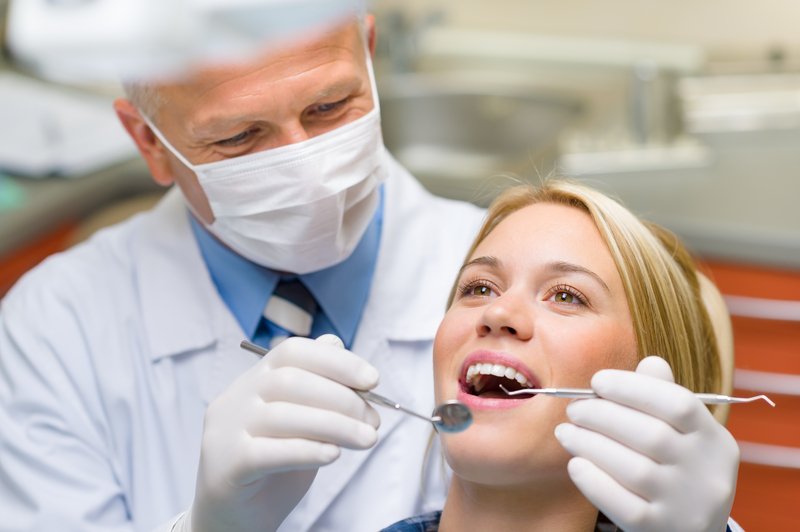
Persistent Pain or Discomfort
Sustained pain or discomfort after gum healing procedures can be indicative of an underlying issue that requires prompt attention and evaluation by a dental professional. While some discomfort is normal during the healing process, it should not persist for an extended period of time. Pain or swelling that lasts beyond a few days may be a sign of infection, which requires immediate treatment to prevent further complications.
If you experience persistent pain or discomfort following gum surgery or other treatments, it is important to seek out a dentist as soon as possible. They will assess your symptoms and determine the underlying cause of your discomfort. Depending on the severity of your condition, they may prescribe medication or recommend additional follow-up appointments to monitor your progress. In some cases, home remedies such as salt water rinses or over-the-counter pain relievers may help manage mild discomfort, but it is essential to consult with a dental professional before attempting any self-treatment methods. Remember that early intervention is key in preventing long-term damage and restoring optimal oral health.

Excessive Bleeding or Swelling
Excessive bleeding or swelling following gum healing procedures may indicate an underlying issue that requires prompt evaluation by a dental professional. While minor bleeding and swelling are common after dental work, excessive amounts of either can be concerning. Bleeding gums can be caused by a variety of factors, including gingivitis (gum disease), trauma to the gums during treatment, or improper oral hygiene practices. In some cases, the bleeding may be a sign of a more serious issue such as leukemia or other blood disorders.
To prevent swelling after gum healing procedures, it is important to follow all post-operative instructions provided by your dentist. This may include avoiding certain foods, applying ice packs to the affected area, and taking prescribed pain medications as directed. Additionally, maintaining good oral hygiene practices such as brushing twice daily and flossing regularly can help prevent future issues with swollen or bleeding gums. If you experience excessive bleeding or swelling after gum healing procedures despite following these guidelines, it is important to contact your dentist immediately for further evaluation and treatment options.
Signs of Infection
Identification of signs of infection is crucial in ensuring proper healing after gum procedures, and early intervention can prevent further complications. Some common signs of infection include redness, swelling, tenderness or pain around the affected area. In some cases, there may also be fever or discharge from the affected area.
If you suspect an infection after a gum procedure, it is important to seek professional medical advice as soon as possible. Your dentist or periodontist may prescribe antibiotics to treat the infection and advise you on appropriate measures to take at home for optimal healing. Prevention tips include maintaining good oral hygiene practices such as brushing twice daily with fluoride toothpaste, flossing regularly and using mouthwash to kill bacteria that cause infections. Additionally, avoiding smoking and limiting alcohol consumption can help boost immune function and reduce the risk of developing infections. There are also various home remedies available that have been shown to promote healing of infected gums such as saltwater rinses or applying a warm compress to the affected area. However, it is important to consult with your dental professional before trying any home remedies to ensure they are safe and effective for your specific condition.
How Can I Prevent Gum Damage?
Preventing gum damage can be achieved through implementing effective oral hygiene practices, such as regular brushing and flossing, as well as avoiding tobacco use and maintaining a balanced diet. Preventive measures include brushing your teeth twice a day for at least two minutes each time using fluoride toothpaste. Flossing once a day is also essential to remove plaque and food particles from between the teeth where toothbrush bristles cannot reach.
In addition to good oral hygiene practices, making lifestyle changes can also help prevent gum damage. Avoiding tobacco products is crucial as smoking or chewing tobacco increases the risk of developing gum disease. Consuming a healthy diet that includes fruits, vegetables, whole grains, lean protein sources, and low-fat dairy products can provide essential nutrients that promote strong teeth and gums.
It’s important to note that preventing gum damage requires ongoing effort and commitment. Regular dental check-ups are recommended every six months to detect any early signs of gum disease or other dental problems. In case you notice any symptoms such as bleeding while brushing or flossing, redness or swelling in the gums; do not hesitate to contact your dentist immediately for further evaluation and treatment options without delay.

Take Care of Your Gums for a Healthy Smile!
Maintaining good oral hygiene practices and making necessary lifestyle changes can help prevent gum damage, ultimately leading to a healthy smile that evokes confidence and positivity. Here are some practical tips for taking care of your gums:
- Brush your teeth twice daily using fluoride toothpaste
- Floss regularly to remove plaque from between teeth
- Use an antiseptic mouthwash to kill bacteria that cause gum disease
- Avoid smoking as it increases the risk of gum disease
- Eat a balanced diet rich in fruits, vegetables, and calcium-rich foods
By following these simple steps, you can ensure that your gums stay healthy for years to come. Consistent oral hygiene practices will help protect against gum disease and other dental problems. In addition to practicing good oral hygiene habits, regular visits to the dentist are essential for maintaining optimal gum health. Your dentist will be able to identify any early signs of gum disease or other dental issues and provide proper treatment before they progress into more severe conditions. Remember, prevention is always better than cure when it comes to maintaining a healthy smile!

Further Entities
- https://en.wikipedia.org/wiki/Oral_hygiene
- https://www.nidcr.nih.gov/health-info/gum-disease
- https://www.health.harvard.edu/topics/pain
Frequently Asked Questions
Can gum damage be reversed?
Reverse gum damage is possible through various gum restoration techniques. These methods aim to repair and regenerate the tissues that support the teeth, such as the bone, ligaments, and gums. One of the most common techniques is scaling and root planing, which involves deep cleaning of the teeth and removal of plaque and tartar below the gumline. This procedure helps eliminate harmful bacteria that cause inflammation and infection in gums. Additionally, grafting procedures can be used to restore lost tissue by transplanting healthy gum tissue or using artificial materials to stimulate new growth. While reversing gum damage may take time and effort, with proper oral hygiene practices, regular dental check-ups, and professional treatments from a periodontist or dentist, it is possible to regain oral health and prevent further deterioration of gums.
How long does it take for gum pockets to heal after periodontal treatment?
Healing gums after periodontal treatment is a time-consuming process, and the recovery timeframe varies depending on the severity of the damage. The good news is that gum pockets can be reversed with proper care and attention. Patients should expect to see noticeable improvement within a few weeks of treatment, but complete healing can take several months or even years. For best results, it’s important to follow a strict oral hygiene routine that includes brushing twice daily, flossing regularly, and using an antimicrobial mouthwash. Additionally, regular visits to the dentist for cleanings and checkups are crucial in maintaining healthy gums. It may require patience and persistence, but reversing gum damage is possible with consistent effort and professional guidance.
Can smoking affect gum healing?
Smoking can have a detrimental effect on gum health and the healing process. Nicotine and other chemicals in cigarettes can cause vasoconstriction, which reduces blood flow to the gums, hindering the delivery of oxygen and nutrients needed for healing. Smoking also weakens the immune system, making it harder for the body to fight off infections that could further damage already compromised gum tissue. Quitting smoking is essential for improving overall oral health and promoting successful gum healing after periodontal treatment. It may take time for improvements to be noticeable, but with patience and commitment to good oral hygiene practices, individuals can enjoy healthier gums over time.
Is it normal to experience pain during gum healing?
Pain management is an important aspect of gum healing, as discomfort is a common side effect of the process. While some degree of pain can be expected during the healing period, it is important to speak with your dentist about effective pain management strategies. This may include over-the-counter pain medication or prescription options for more severe cases. Additionally, regular dental visits are crucial for monitoring the progress of healing and addressing any concerns that may arise. By prioritizing pain management and seeking professional guidance throughout the healing process, patients can experience a smoother recovery and ensure optimal oral health in the long term.
Are there any natural remedies to promote gum healing?
Herbal remedies and dietary changes can promote gum healing naturally. Certain herbs, such as chamomile and sage, have anti-inflammatory properties that can reduce swelling and pain in the gums. Aloe vera gel can also be applied topically to soothe irritated gums. In addition, a diet rich in vitamins C and D, calcium, and omega-3 fatty acids can help strengthen gums and prevent further damage. This includes consuming foods like leafy greens, citrus fruits, dairy products, nuts, and fatty fish. While natural remedies may provide some relief for gum issues, it is important to consult with a healthcare professional for proper diagnosis and treatment options.
Conclusion
Healing gums is an important aspect of dental health, but it can be a confusing topic for many people. It’s essential to understand the signs and causes of gum damage, as well as how to promote healing and prevent further damage. Poor gum healing can lead to complications such as infection or tooth loss. If you’re experiencing any issues with your gums, it’s important to see a dentist right away.
In conclusion, find expert answers to frequently asked questions about healing gums and achieve optimal oral health.Preventing gum damage involves avoiding risk factors like tobacco use while maintaining good oral hygiene habits through regular brushing and flossing. In conclusion, taking care of your gums is essential for ensuring optimal dental health outcomes in both short-term recovery from injury or trauma-induced damages as well as long-term prevention against potential future problems like periodontal disease that could negatively impact not just your mouth but also overall quality-of-life by affecting things like speech ability due to missing teeth caused by severe bone loss over time resulting from untreated gingivitis conditions without proper intervention.


